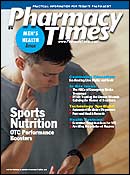Publication
Article
Pharmacy Times
Coagulation Counseling
Author(s):
Dr. Garrett is manager of the Health Education Center, Mission Hospitals, Asheville, North Carolina.
TRANSDERMAL ESTROGEN MAY HAVE LOWER CLOT RISK THAN ORAL ESTROGEN

A recent study suggests that the dosage form of estrogen may play a role in the risk of blood clots. The study assessed the risk of clots for oral and transdermal estrogen products. Compared with nonusers of estrogen, the users of oral estrogen were 2.5 times more likely to develop a first episode of venous thromboembolism (VTE). Users of transdermal estrogen had an odds ratio of 1.2 versus nonusers. Past users of oral estrogen had a? risk of VTE similar to patients who had never taken estrogen.
The risk of VTE in women using oral estrogen was twice as high in the first year of treatment, compared with treatment for more than 1 year. No noticeable difference in the risk of VTE was observed between unopposed and opposed estrogen. A review of the results from 9 randomized controlled trials confirmed the increased risk of VTE among women using oral estrogen. The risk with oral products was higher in women with obesity or genetic predisposition to clot formation, but transdermal estrogen did not seem to confer additional risk in women at high risk of VTE.
NEW ORAL ANTICOAGULANT DEMONSTRATES SUPERIOR CLOT PREVENTION
Phase 3 clinical trial results demonstrate that rivaroxaban (to be marketed as Xarelto), a 1 tablet/once-daily, oral investigational anticoagulant, showed superior efficacy in preventing venous blood clots in patients following total knee replacement (TKR), while maintaining low major bleeding rates. The Regulation of Coagulation in major Orthopedic surgery reducing the Risk of DVT and PE (RECORD4) study compared rivaroxaban with injectable enoxaparin.
The RECORD4 data show that rivaroxaban (10-mg tablet once-daily) provided TKR surgery patients with a statistically significant reduction of total venous thromboembolism (VTE) event rates over twice-daily injectable enoxaparin.
This corresponds to a 31% relative risk reduction over enoxaparin. The rate of major bleeding in the rivaroxaban-treated patients was low and not statistically different to the rate of major bleeding in the enoxaparin-treated patients (0.7% and 0.3%, respectively).
The previous studies in the RECORD series compared rivaroxaban against enoxaparin 40 mg injected once-daily after major orthopedic surgery. RECORD4 is the first trial to evaluate rivaroxaban against enoxaparin 30 mg injected subcutaneouslytwice-daily.
GLUCOSAMINE–WARFARIN LINKED TO ADVERSE EVENTS

Glucosamine and glucosamine-chondroitin supplements have now been linked to interactions with warfarin in over 40 reports. The first report of a potential interaction came out about 4 years ago and involved double the therapeutic dose of both glucosamine and chondroitin. Since then, reports have involved glucosamine or glucosamine-chondroitin combination products at usual doses. Adverse outcomes have included increased bleeding time (international normalized ratio), bruising, bleeding, coma, and hospitalization. Chondroitin is a small component of a heparinoid and might have weak anticoagulant activity. Preliminary research suggests that glucosamine might have antiplatelet activity. Patients should be advised to exercise caution with this supplement and to contact their anticoagulation provider prior to starting any regimen of supplements.
FDA DELAYS DECISION ON PRASUGREL APPROVAL
The FDA has delayed its decision on approval of the new antiplatelet agent prasugrel until September. Prasugrel is awaiting approval for the treatment of acute coronary syndrome (ACS) patients who are managed with percutaneous coronary intervention (PCI).
The approval application is based on the Trial to Assess Improvement in Therapeutic Outcomes by Optimizing Platelet Inhibition with Prasugrel (TRITON-TIMI 38), which showed significantly reduced ischemic events, compared with clopidogrel, but at the expense of an increase in major bleeding in ACS patients scheduled for PCI. The TRITON investigators have highlighted subgroup analyses that they say have identified several groups at higher risk of bleeding, and if these patients were excluded, the benefit of prasugrel appeared to outweigh the risk in the rest of the population.
On the basis of these subgroup analyses, it has been suggested that, if approved, prasugrel would likely be contraindicated in patients with a previous stroke.







